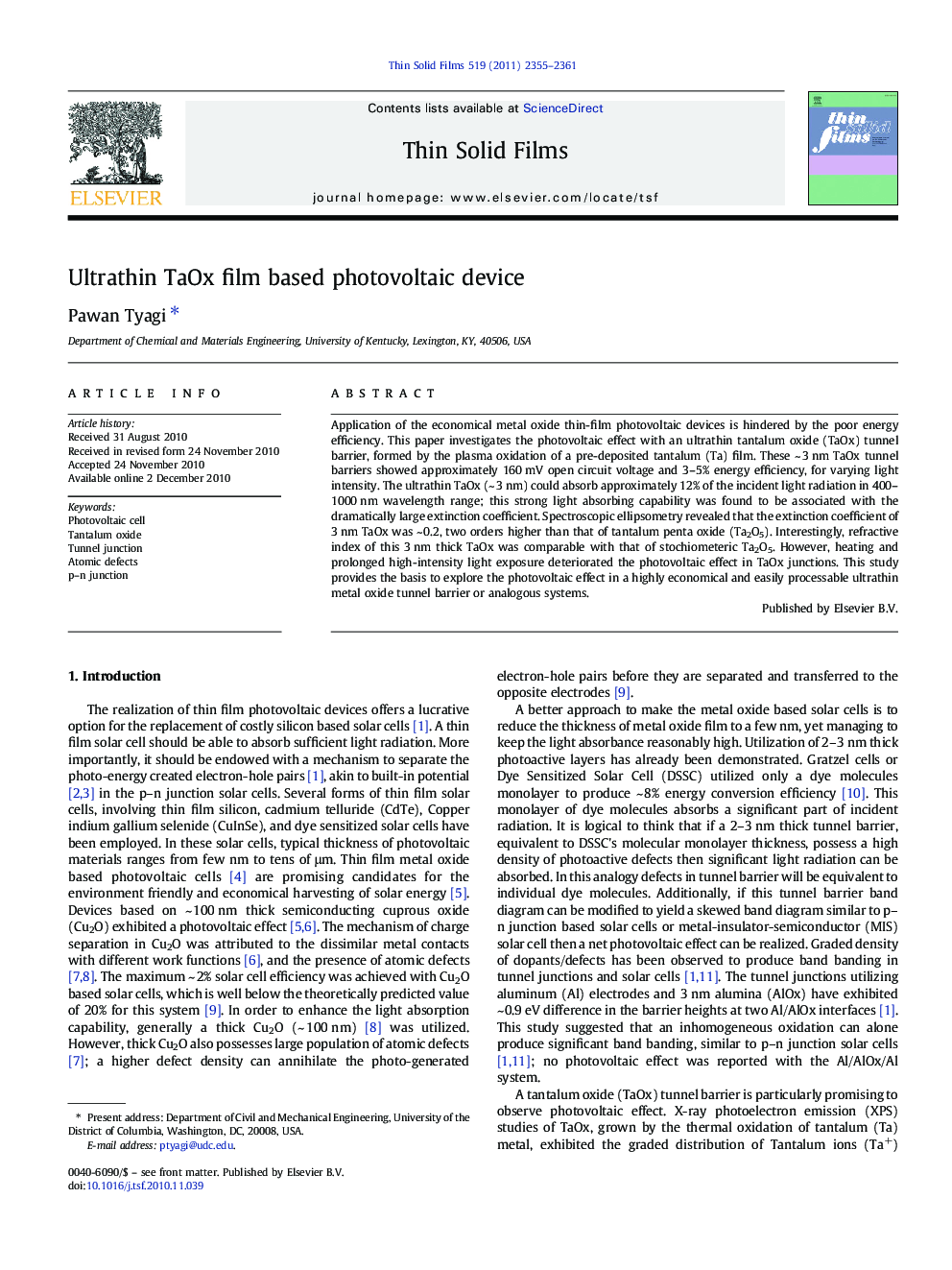| Article ID | Journal | Published Year | Pages | File Type |
|---|---|---|---|---|
| 1669269 | Thin Solid Films | 2011 | 7 Pages |
Application of the economical metal oxide thin-film photovoltaic devices is hindered by the poor energy efficiency. This paper investigates the photovoltaic effect with an ultrathin tantalum oxide (TaOx) tunnel barrier, formed by the plasma oxidation of a pre-deposited tantalum (Ta) film. These ~ 3 nm TaOx tunnel barriers showed approximately 160 mV open circuit voltage and 3–5% energy efficiency, for varying light intensity. The ultrathin TaOx (~ 3 nm) could absorb approximately 12% of the incident light radiation in 400–1000 nm wavelength range; this strong light absorbing capability was found to be associated with the dramatically large extinction coefficient. Spectroscopic ellipsometry revealed that the extinction coefficient of 3 nm TaOx was ~ 0.2, two orders higher than that of tantalum penta oxide (Ta2O5). Interestingly, refractive index of this 3 nm thick TaOx was comparable with that of stochiometeric Ta2O5. However, heating and prolonged high-intensity light exposure deteriorated the photovoltaic effect in TaOx junctions. This study provides the basis to explore the photovoltaic effect in a highly economical and easily processable ultrathin metal oxide tunnel barrier or analogous systems.
